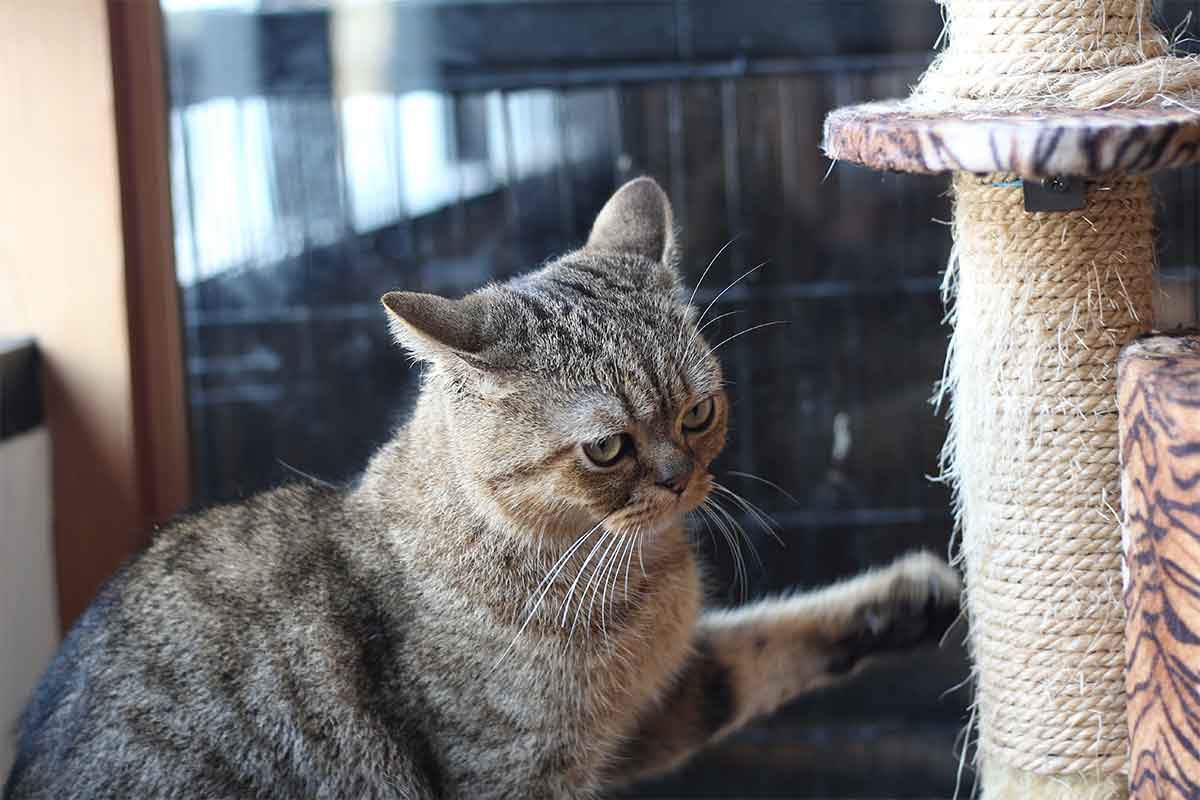Upon the first application of Feliscratch to attract our 15-year-old Devon Rex cat, Roxy, to the post, she rubbed her cheek glands, depositing comfort pheromones on the scratching post.
Feliscratch contains a blue dye to help mark the post with a visual cue. Cats actually do that when they scratch (please never apply Feliscratch on the cat). The Feliscratch product contains catnip, and everyone knows how cats generally feel about that. The catnip also attracts cats to the posts. However, the real secret sauce is a copy of the pheromone cats naturally deposit when scratching. This pheromone identifies the place as the cat’s.
Most cats are attracted to a vertical post when Feliscratch is used. If the cat is scratching where you want, it means that mostly the cat is not scratching where you don’t want. It makes sense.
But what about our 15-year-old cat with no real history of inappropriate scratching? Given her age, experts suggested Roxy might not respond quickly to Feliscratch.
I was about to lift the heavy vertical scratching post back up after applying the solution to it, but before I could, there was Roxy beginning to scratch. She had been in a nearby room and came running (as much as a 15-year-old cat runs). It’s as if Feliscratch in cat language is like posting a sign saying, “scratch here.”








